How to check the heating element on a washing machine?
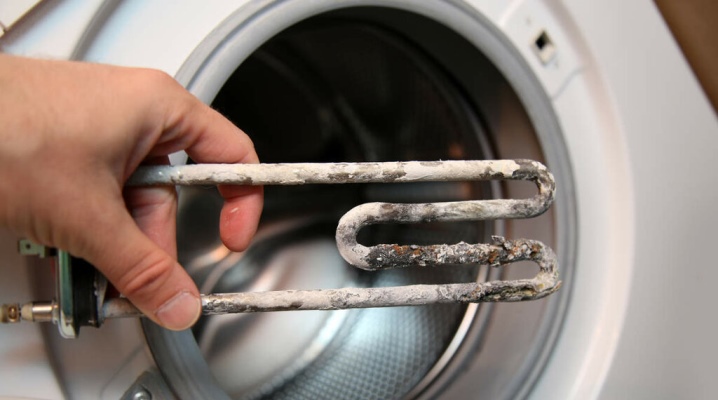
TEN - in a simple way, a powerful boiler is a heating device that allows you to raise the water temperature to +40 degrees or more. Automatic washing machines (CMA) can withstand washing without problems even at almost a hundred degrees. But if the heating element is faulty, there will be no heating.
How does it work?
Heating element is a part that heats up due to the internal spiral. The latter is located in the thickness of the pressed heat-conducting insulator. Both are housed in a sealed steel casing. Modern technologies make it possible to press not one, but 2-3 spirals into the heating element.
Gone are the days when the only spiral, thick in cross-section, resembling an ordinary open spiral in its parameters, in contact with the air in the room, was packed in such a casing.
Nichrome spirals can be very thin - up to 0.25 mm, and their electrical length is reduced due to the not very tight fit of the turns. Their internal resistance decreases, and such a heating element in a dry state is red-hot. But this does not happen in water - the spiral cools down in a timely manner. Connection diagram - to a 220 volt network through a thermostat.

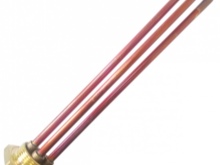

Where is it located?
Placed inside the drum tank, the boiler is most often located as low as possible. This will allow the water to heat up extremely quickly. The power of the boiler reaches two kilowatts - almost like in a powerful electric kettle.
To find the heating element, use the following methods.
- Check the space behind the back of the washing machine. The back wall, which is characterized by a large area, hides the boiler behind it. This wall is easier to remove than the others (front, top, bottom and side). If there are no boiler leads and wires suitable for it, you can easily close the lid in this place.
- It is permissible to tilt the SMA to one side and look towards the bottom.
- The drum hatch is large enough to open and look inside the washing compartment. By turning on the flashlight, you can easily find the boiler. It may be closer to both the front panel and the rear wall.
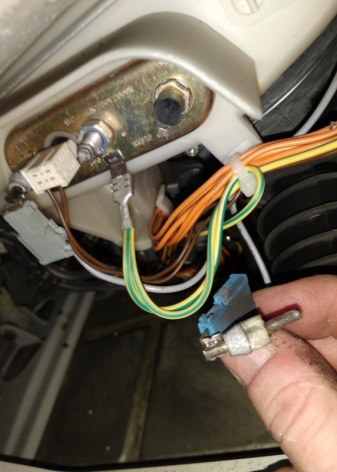
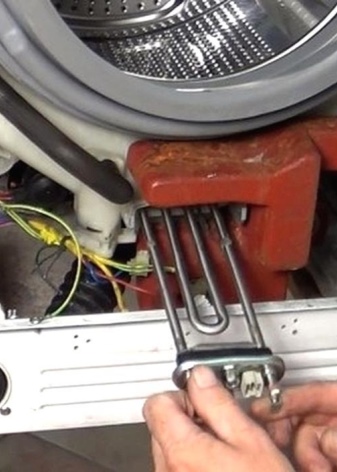
To check the heating element for performance, there is no need to pull it out.
Diagnostics
Preliminary checks do not require a measuring device - they are carried out indirectly. Having an idea of how a particular node functions and how much it consumes, in what sequence the devices of the washing machine are used, it is easy to determine what is faulty by the method of elimination. The heating element is determined for a malfunction at the moment when the SMA activates water heating. Symptoms of a boiler malfunction may be as follows.
- Too long heating the water. SMA starts up, all parts and assemblies are working. But the heating of water to +60 degrees does not take 5 (provided that the water from the water supply is ice cold, the laundry is washed in winter) minutes, but, say, half an hour. All this time the drum is in place.
- Touching the metal walls of the washing machine, the user feels that he is being shocked. In this case, the residual current device (RCD) is triggered, turning off the power due to the leakage current (only a value of more than 1 milliampere is enough for the light in the room where the SMA works to go out).
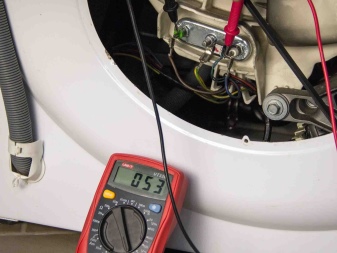
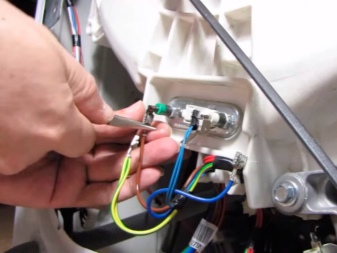

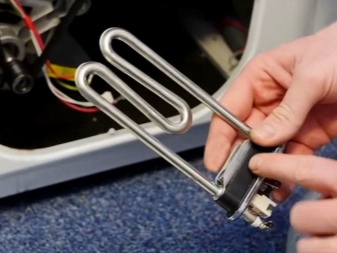
If it is impossible to check exactly why the protective power outage is triggered, it makes sense to invite an electrician.
Indirect methods of a faulty boiler are determined differently.
- By the presence of dark dots on the outer coating of the heating element.This indicates its breakdown. To remove the limescale that hides these stains, use water infused with lemon or orange peels and brought to a boil.
- Start washing the laundry at more than +90 degrees. Track how fast the meter is counting the watts consumed. With a fast countdown (for example, 100 W in no more than 3 ... 5 minutes), the heating element operates at full power.
- Try to find an open or short circuit using a test light or an indicator screwdriver. As such a light bulb, a gas-discharge "neon" is used, taken out of any heating device that has exhausted its resource. In order for it to light up slightly when connected to a current-carrying contact or the body of the boiler, you must touch its second terminal. An interruption occurs, for example, during a power surge. In the event of a break or burnout of the section of the spiral, the CMA will stall at the heating stage, or the washing cycle will not start.
- Determine if the boiler is bulged, scratched, or otherwise damaged. Often, where it happened, the heating element burns out.
- The sunroof glass is not warmed up - this indicates cold water.
- There are undissolved particles of washing powder on the clothes, and the washed laundry acquired a stale smell.

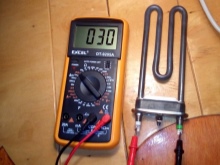
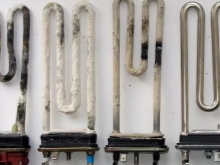
The second and fourth methods are good for those who do not want to disassemble the washing machine before the arrival of a specialist.
The most advanced models of washing machines will display an error code (out of dozens possible according to the instructions), which most accurately indicates a specific breakdown, the signs of which are also indicated in the instructions and are "tied" to individual values displayed on the screen.
If there is no display, different modes of blinking, flickering, and glowing of the LEDs may indicate a breakdown.
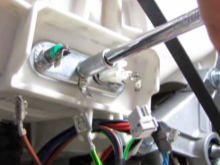
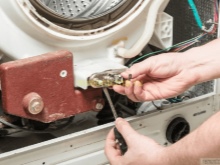
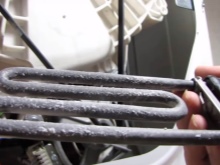
Reasons for burning out the heating element
- The machine could accidentally start heating the boiler without water. But such failures are rare, they occur after many years of trouble-free operation, when the software part fails more and more often. Such a state, if the heating element is heated "dry", is fraught with both its explosion and fire - excess heat can heat the drum and other parts and machine assemblies surrounding the boiler. There are almost no cases of spontaneous combustion of a malfunctioning washing machine from an overheated heating element.
- When the heating element breaks down, the spiral touches the heater casing in two places, and its electrical length has become shorter. An overheated heating element will overload the network, say, like a 4-kilowatt spiral, and will heat up to a bright orange color. What is left of the spiral will quickly burn out - nichrome melts at +1400 degrees.
- The car was constantly "driven" at the maximum washing temperature. The spiral wears out faster from this.
- SMA was somehow used for other purposes - for example, to quickly heat 2 ... 3 buckets of water (as much as fit in the drum). The drain hose was then led into the hot water tank.

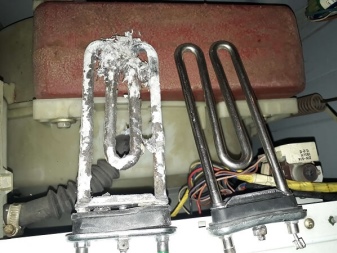
How to remove?
It is not necessary to completely remove the boiler if it does not need to be replaced. It often happens that the problem is not in it, but you still need to check it. Disconnect the wires from the current-carrying contacts that go deep into the boiler. Do not forget their location - before disconnecting, it is better to take one or more photos with your smartphone.
How to call?
To check the suitability of the electric coil in the boiler, ring the electrical circuit by attaching the probes to the contacts. Normally, the resistance will show 20-50 ohms. If the readings tend to infinity or more than 100 ohms, the boiler is considered faulty. Infinite resistance will definitely indicate a break.
The measuring range is the lowest (up to 200 Ohm), more clearly the boiler is checked in the buzzer mode.
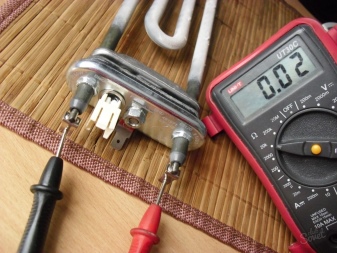
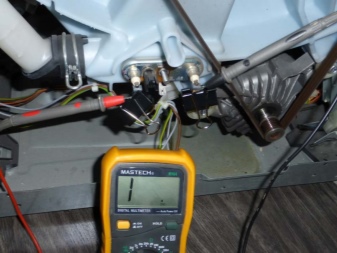
How to check for breakdown?
Breakdown testing - checking the insulation resistance. Ideally, the insulation should be at least a few megohms. Checking for breakdown in any of the places is carried out with electric shocks from the CMA case and / or when an RCD is triggered. One probe of the multimeter is applied to any of the contacts, the second to the body of the boiler. A resistance below 20 ohms tending to zero will indicate a frame fault. TEN, "punched" on the body, cannot be used.
Breakdown occurs when a layer of dielectric from a heating spiral burns out, which can be quartz, mica, heat-resistant and heat-resistant clay like the one from which refractory bricks are made, and so on.
This insulator fills the entire internal free part of the boiler, preventing the coil from touching the outer steel casing.
Professionals use mega- and gigaohmmeters operating at a supply voltage of 500-2500 volts. These high-voltage testers are not always available to an ordinary consumer. It is recommended to use them with dielectric gloves.
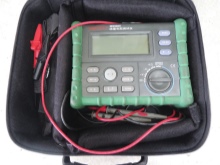
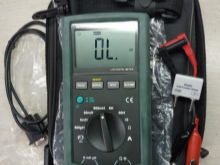

A breakdown test with both a tester and a megohmmeter is carried out on a washing machine with the obligatory disconnection of the terminals and de-energizing the entire unit; in this case, protection against electric shock is not required.
The fact is that ordinary testers only give out a voltage of up to several volts - it is not dangerous for unprotected hands if they do not have wounds. It is recommended to turn on the tester for the highest measurement range - up to 2 MΩ.
How do I determine the resistance reading?
To check the boiler, you will need to calculate the resistance according to the following algorithm, based on the school physics course.
- The voltage in the network is about 220 V.
- The power of the boiler is indicated in the instructions for this washing machine.
- Resistance can be calculated by dividing the square of the voltage value by the declared power. So, for a power of 1800 W, the resistance of the coil will be 26.8 ohms. If this (or the closest to it) value is displayed on the device, then the serviceability of the heating element is obvious.
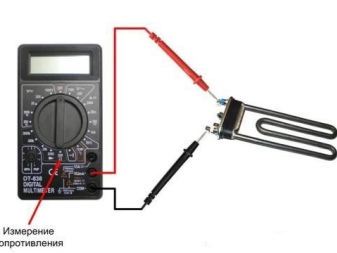
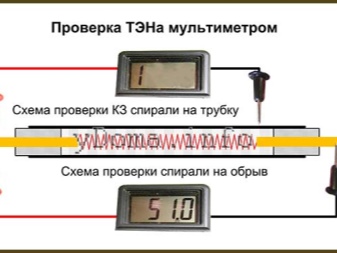
This is the working resistance of the boiler. It is this that determines the current strength that loads the electrical line suitable for the washing machine - without taking into account the energy consumption from the rest of the units and units of the unit.
All of the above methods for checking the heating element will work with any heating devices where it is used - from irons to clothes dryers.
It is very easy to check the heating element. Even without the device, it is possible with a high degree of probability to reveal that it was he who broke. Replacing a damaged boiler is an even easier step than diagnosing it.
See the video for how to check the heating element.













The comment was sent successfully.